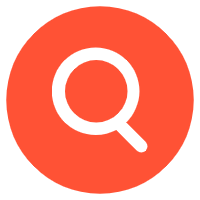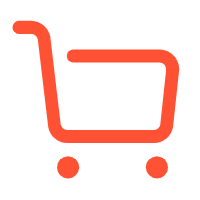
EFL · National City (Korea)
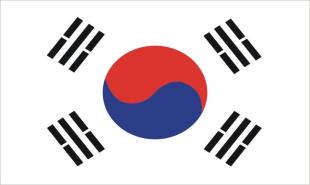
Landmark construction: Gyeongbok Palace

Republic of Korea (Republic of Korea)
[Surface volume] 103,290 square kilometers.
[Population] About 52 million as of March 2021. The population is very unevenly distributed in South Korea. Most of the population lives in cities, with an urbanization rate of 82.5%. For a single ethnic group, the common Korean language, about 50% of the population believe in Buddhism, Christianity, Catholicism and other religions.
[Capital] Seoul, population 10.34 million. It covers an area of 605 square kilometers and has an average annual temperature of 11.6℃.
President Moon Jae-in was elected on May 10, 2017.
The Spring Festival: the first day of the first month of the lunar calendar; New Year's Day: January 1; Independence Day: March 1; Buddha's Birthday: The eighth day of the fourth month of the lunar calendar; Showing loyalty day: June 6; Constitutional Day: July 17; Recovery Day: August 15, commemorating the recovery from Japanese colonial rule (1945) and the establishment of the government of the Republic of Korea (1948); Mid-Autumn Festival: August 15 of the lunar calendar; Kaeson: October 3, the legendary founding day of ancient Korea; Korean Literature Festival: On October 9th, it was established to commemorate the promulgation of "Xun People Correct Voice". Christmas Day: December 25th.
South Korea is located in the south of the Korean Peninsula in East Asia, surrounded by the sea on three sides, the Yellow Sea on the west, the Korea Strait on the southeast, the Sea of Japan on the east, and the border with North Korea across the 38th parallel demilitarized zone on the north. Mountains cover about two thirds of the Korean Peninsula. The terrain is diverse, with low mountains, hills and plains crisscross. Low mountains and hills are mainly distributed in the central and eastern regions, with an elevation of less than 500 meters. It is a temperate monsoon climate with an average annual temperature of 13℃ ~ 14℃ and an average annual precipitation of about 1300 ~ 1500 mm.
Korea was a Japanese colony from 1910 to 1945. In August 1945, Japan surrendered, and American and Soviet troops were stationed in the north and south of the peninsula. The Republic of Korea was established on the southern half of the peninsula on August 15, 1948, with Syngman Rhee as its first president. In 1960 Syngman Rhee stepped down and Yoon became president in August of that year. Park Chung-hee was in power for a long time after a military coup in 1961. In 1979, when Park Chung-hee was assassinated and Choe became president, Chun Doo-hwan launched a coup in the same year and became president in 1980. In 1987, the Constitution of South Korea was amended to allow direct election of the president, and Roh Tae-woo was elected the 13th president in the same year. Since then, Kim Young-san, Kim Dae-jung, Roh Moo-hyun, Lee Myung-bak, Park Geun-hye and Moon Jae-in have been elected presidents from the 14th to the 19th.
[Constitution] The first Constitution of the Republic of Korea was adopted in Shanghai, China, on 17 July 1948. The present constitution consists of a preamble, 130 articles and six supplementary provisions. The Constitution is divided into 10 chapters: General Principles, Rights and Duties of Citizens, Parliament, Government, Courts, Constitutional Court, Election Administration, Local Self-Government, Economy, and Constitutional Amendment. The basic principles of the South Korean Constitution include: national sovereignty, separation of powers, the pursuit of peaceful and democratic reunification of the two Koreas, the pursuit of international peace and cooperation, the rule of law, and the state's responsibility to promote the national economy and people's livelihood. The current constitution was adopted by referendum in October 1987 and entered into force on 25 February 1988. The constitution stipulates that the president enjoys the power as head of state, head of government and commander-in-chief of the armed forces for a five-year term without a second term.
Congress, a legislative body. Its main functions include: reviewing bills; To examine state budgets and final accounts; To supervise the work of the government; Ratifying foreign treaties and agreeing to declare war or make peace, impeaching the President and principal government officials, and vetoing the President's emergency orders, etc. It is a unicameral system with a total of 300 seats for a four-year term. The 21st Congress will be elected in April 2020.
【 Government 】 It has 18 departments, 5 departments and 18 departments. The President concurrently serves as the head of the government and the Prime Minister assists the President in his work. The current prime minister, Tin Shi-kyun, has been in office since January 2020.
【 main site 】 the presidential palace: http://www.president.go.kr, the Ministry of Foreign Affairs: http://www.mofa.go.kr
[Administrative Divisions] The country is divided into one special city: Seoul Special City; 2 special municipalities (roads) : Sejong Special Municipality, Jeju Special Municipality; 8 provinces: Gyeonggi, Gangwon, North Chungcheong, South Chungcheong, North Jeolla, South Jeolla, North Gyeongsang, South Gyeongsang; 6 wide area cities: Busan, Daegu, Incheon, Gwangju, Daejeon, Ulsan.
The judicial organs are the Grand Court, the High Court, the District Court and the Family Court. The Supreme Court is the highest judicial organ, and its president, Kim Myung-soo, is appointed by the president and approved by parliament for a six-year, non-renewable term. There is also a constitutional tribunal, the current director of Liu Nanshuo.
The procuratorial organs include the Grand Procuratorial Office, the High Procuratorial Office and the Local Procuratorial Office, which are subordinate to the Ministry of Justice. The Grand Prosecutor's Office is the highest prosecutorial organ. The attorney general is appointed by the president without the consent of Congress.
[Major Political Party] Democratic Party: Forerunner to the New Political National Assembly led by Kim Dae-jung. The party became the ruling party in 1997 when Kim Dae-jung was elected president. In 2003, it split into the Open Nationalist Party and the Democratic Party, which merged into the United Democratic Party in February 2008 and changed its name to the Democratic Party in July. In December 2011, the Democratic Party merged with the Civic United Party and the General Union of Korean Labor Unions to form the Democratic United Party. In May 2013, it changed its name to Democratic Party. In March 2014, it formed the New Political Democratic United Party with Ahn Cheol-soo as the representative of political forces. In December 2015, it changed its name to the Democratic Party. The party's candidate, Moon Jae-in, won the election in May 2017.
In the 1960s, South Korea's economy began to take off. Since the 1970s, China has maintained rapid growth, with per capita GNP increasing from US $87 in 1962 to US $10,548 in 1996, creating the "Miracle on the Han River". In 1996, it joined the Organization for Economic Cooperation and Development (OECD) and became one of the founding countries of the World Trade Organization (WTO). After the Asian financial crisis in 1997, South Korea's economy entered a period of medium growth.
As a developed country, South Korea's GDP ranked 11th in the world in 2017. Its industries include mobile phones, television, semiconductors, steel, shipbuilding, petrochemicals, construction machinery and Marine engineering equipment, making it highly competitive in the world. In terms of industry and economy, South Korea has a gross domestic product of $1.5 trillion, which is higher than Russia and Australia, which are 11th in the world. More importantly, South Korea is one of the fastest growing of the world's top 15 economies, and its growth rate is second only to that of the world's major countries, China and India. In addition, South Korea's GDP per capita from 2010 accounted for 49% of Japan's per capita gross domestic product (GDP) rose to 70% in 2016, the per capita gross domestic product (GDP) is gradually close to Japan, in the past 16 years, south Korean industrial added value for $493.7 billion, has more than Britain and Canada, ranked sixth in the world, the added value of manufacturing ranked fifth in the world.
The industry is dominated by manufacturing and service industries. Shipbuilding, automobile, electronics, steel, textile and other industries rank among the world's top 10 in terms of output. Large enterprise groups play a very important role in South Korea's economy. At present, major enterprise groups include Samsung, Hyundai Motor, SK, LG and so on.
In recent years, South Korea's economy maintains a low growth momentum. According to the statistics of the Bank of Korea, in 2019, the nominal GDP of South Korea was US $1,657.03 billion, ranking 11th in the world. Its per capita GDP is US $32049.6, ranking 30th in the world. In 2008, affected by the international financial crisis, South Korea's economy declined significantly. With the rapid adoption of a series of policies including large-scale fiscal stimulus, the financial market has recovered in an all-round way, the real economy has stabilized and recovered, and the confidence of businesses and consumers has continued to increase. The ROK has become the first country among OECD member states to get out of the trough.
Major economic data for 2020 are as follows:
GDP: $1.65 trillion.
National income per capita: $32,000.
Economic growth rate: -1.0%.
Currency name: KRW.
Exchange rate: 1 USD ≈1133 KRW (floating exchange rate system).
[Resources] South Korea has few mineral resources. More than 280 kinds of minerals have been discovered, of which about 50 kinds have economic value. Minerals with mining value include iron, anthracite, lead, zinc, tungsten, etc., but the reserves are not large. Due to the lack of natural resources, the main industrial raw materials are dependent on imports.
[Industry] South Korea's industries mainly cover automobile manufacturing, steel, electronics, shipbuilding, chemical, petroleum, textile and other fields. South Korea's rapid economic development is mainly due to the support of large financial groups, concentrated capital and resources to win the first place in various fields, such as Samsung Group, Hyundai Group, SK Group and LG Group. South Korea's industrial added value in 2018 was $568.7 billion, ranking sixth in the world. In terms of Asian countries, South Korea ranks fourth in industrial output, after China, Japan and India.
The output value of industry and mining accounts for 27% of GDP. The sales of semiconductors and crude steel rank the first in the world and the sixth in the world.
[Agriculture] The current cultivated area is 1.565 million hectares, mainly distributed in the western and southern plains and hilly areas. The agricultural population accounts for 4.3% of the total population. Agricultural output (including fisheries and forestry) accounts for 2% of GDP. South Korea's agriculture is the basic industry of South Korea's economy, which consists of planting, animal husbandry, forestry and fishing. At the beginning of its founding, South Korea was a typical agricultural country, with more than 80% of its population engaged in agricultural production. After the land reform of Syngman Rhee's government, the economic revitalization of Park Chung-hee's military government and the wave of world trade liberalization from the 1980s, Korean agriculture has undergone great changes. Through the Green Revolution, South Korea became self-sufficient in its staple food, rice, in 1978. In 1996, South Korea basically realized the mechanization of agriculture, becoming the first Asian country after Japan to realize the mechanization of fine planting agriculture. The development of agriculture in South Korea has also led to the development of agriculture-related industries such as fertilizers, agricultural machinery and seeds.
[Foreign Trade] From 2009 to 2019, the total volume of South Korea's imports and exports of goods fluctuated. In 2010, South Korea gradually emerged from the impact of the international financial crisis. From 2011 to 2014, South Korea's foreign trade exceeded $1 trillion for four consecutive years and remained relatively stable. In 2015 and 2016, South Korea's foreign trade fell below $1 trillion again due to factors including slowing global economic growth and falling oil prices. Since 2017, South Korea's foreign trade began to pick up again, and the import and export volume continued to grow to $1.14 trillion in 2018, but the growth rate halved compared with the previous year, only 8.4%. From 2009 to 2018, South Korea has always maintained a trade surplus, and the trade surplus has a trend of expansion. In 2018, South Korea's exports reached US $605.17 billion, up 5.5%; Imports of 535.17 billion US dollars, up 11.8%; The trade surplus was $70bn, 73.1 per cent higher than in 2009, although down 26.5 per cent year on year. To be specific, South Korea's trade deficit in 2018 was mainly caused by Japan, Germany and some Middle East oil-producing countries. The trade surplus comes mainly from China, Hong Kong and Vietnam.
In 2019, South Korea's total import and export trade was US $1,0456 billion, exceeding the US $1 trillion mark for the third year in a row, but down 8.3 percent from the previous year. Among them, South Korea's export was US $542.3 billion, a year-on-year decrease of 10.3%; Imports reached US $503.3 billion, a year-on-year decrease of 6.0%. In 2019, the trade volume between the ROK and the 16 countries and regions to which the FTA is a contracting party was US $725.2 billion, down 6.2% year on year, accounting for 69.4% of the total trade volume. (The proportion in 2018 was 75.5%, and the reason for the decrease was that the statistical method was changed in 2019. Vietnam and Singapore, which had been repeatedly counted, were included into ASEAN and no longer counted. According to the new statistical standard, the proportion in 2018 was 67.8%, and the proportion in 2019 was increased by 1.6 percentage points year-on-year.) A year-on-year decrease of 9.2%; Imports amounted to US $326.8 billion, down 2.3% year on year.
In 2020, China's total foreign trade will reach $980 billion, with a trade surplus of $45.62 billion. Among them, exports amounted to US $512.85 billion, an increase of 5.4% over the previous year; Imports reached US $467.23 billion, an increase of 7.2% over the previous year. It has economic and trade relations with more than 180 countries and regions in the world. China, the United States and Japan are the top three trading partners of the Republic of Korea.
The main imported products are crude oil, semiconductor, natural gas, petroleum products, semiconductor parts, steel plates, coal, communication equipment, cables, etc. The main export products are automobiles and parts, semiconductors, wired wireless communication equipment, ships, petroleum products, flat panel LCD, personal computers, film and television equipment, etc.
[Bilateral Trade] China and the ROK have natural advantages in developing bilateral trade due to their geographical proximity, cultural affinity, convenient transportation and logistics and frequent personnel exchanges. At the same time, our two economies and industrial technologies are at different stages of development, which is conducive to mutual complementarity and win-win results. Since the formal establishment of diplomatic ties in August 1992, China-ROK trade has overcome two economic crises and maintained rapid growth. After exceeding US $200 billion in 2010, it exceeded US $300 billion in 2018. According to Chinese customs statistics, in 2019, bilateral trade volume between China and the ROK was $284.58 billion, down 9.2 percent year on year. Among them, China's exports to the ROK amounted to US $111.0 billion, up 2.1% year on year. Imports reached US $173.57 billion, down 15.2% year on year. China is South Korea's largest trading partner, import source and export market, while South Korea is China's third largest trade destination and the largest source of imports. The top three goods South Korea imports from China are electric motors and electrical equipment and their accessories, nuclear reactors, boilers and machinery and their accessories, and steel. Imports in 2019 were 39.24 billion US dollars, 14.60 billion US dollars and 5.38 billion US dollars, up 12.4%, -5.8% and -5.6% respectively, accounting for 36.7%, 13.6% and 5.0% of South Korea's total imports from China. Among the major goods South Korea imports from China, mechanical and electrical products and their accessories have seen a large increase. In the import market of labor-intensive products such as raw materials, furniture and toys, China continues to maintain its advantage in the South Korean market.
According to Chinese statistics, the bilateral import and export volume of goods between the ROK and China in 2020 will be US $285.26 billion, an increase of 0.3% over the previous year. Among them, South Korea's export to China was US $172.76 billion, down 0.5%. Imports from China were $112.5 billion, up 1.4 percent. South Korea's trade surplus with China is $60.26 billion.
[Culture] The confrontation between the North and the South on the Korean Peninsula after the Korean War led to the differences in the modern socialization between the North and the South, but the traditional cultures of the two sides are in the same line. The modern social culture of South Korea is derived from the combination of the traditional culture of the Korean nation and the popular culture of the modern society. Since the confrontation between the North and the South of the Korean Peninsula in 1948, the modern culture of the North and the South has developed in different ways. The modern social culture of South Korea is the product of the modernization of Korean national culture. With the development of South Korea's economy and society, the way of life of the Korean people, such as food, clothing, housing and transportation, has also changed, thus constructing the modern culture of South Korea. The popularity of Korean culture in Asia and the world is called the Korean Wave.
Traditional Korean Clothing
Hanfu is the native clothing of the Korean nation (also known as the Korean nation) from the ancient Silla Kingdom and Korea to the Joseon Dynasty. It is developed through continuous "national localization" after being greatly influenced by Chinese Hanfu.
The first prototype was formed in the Goryeo Dynasty, and then it absorbed the characteristics of Chinese costumes in various periods, and finally took shape in the early Chosun Dynasty (1392-1910). Hanfu carries the important intangible cultural property of the Korean nation of 13 items of garment making skills, including Hanshan ramie weaving, silk weaving, Luozhou coarse cloth weaving, dyers, gold foil smiths, needle and thread smiths, embroiderers, engraving, fastening, scarf smiths, crown making, net cloth smiths, and boots and shoes smiths.
Literature and Art
Korean literature can be divided into classical literature and modern literature according to the age. South Korean classical literature developed under the background of the traditional folk beliefs of the Korean people, but also under the influence of Taoism, Confucianism and Buddhism, while South Korean modern literature developed through contact with Western culture in the process of modernization. From the west, not only Christian ideas were introduced into Korea, but also numerous artistic trends and influences. Korean art is diverse and colorful, including fine arts, sculpture, music, dance, film, drama and so on. The aesthetic tradition pursued by the upper class artists of the Korean Peninsula in ancient times was natural, elegant and simple and generous. Korean art, including painting, calligraphy, sculpture, printmaking, crafts, decoration and so on, has inherited the national tradition, and absorbed the foreign art expertise. Korean painting is divided into "Oriental painting" and "Western painting". Oriental painting is similar to traditional Chinese painting, and it is divided into "Southern School" and "Northern School". It uses brush, ink, inkstone and paper to express various themes. In addition to the landscape paintings with ink and wash and plants and animals such as plum, orchid, chrysanthemum, bamboo, there are also a variety of gorgeous folk paintings. Western paintings were introduced to Korea at the beginning of the 20th century. Now they are mostly abstract paintings, and exhibitions of various forms are often held. Throughout the long history of the world, Koreans have always been known for their love of music and dance. For thousands of years, South Korean villagers often gathered to sing and dance to celebrate their harvest. Modern Korean music can be roughly divided into "folk music" and "western music". Folk music is rich in content and diverse in form, and can be divided into two types: "elegant music" and "folk music". Yayak is the music played by professional bands during the festivals, banquets or various ceremonies in the imperial court of feudal dynasties in Korea. It is generally called "Zhengyue". It is composed of secular music originating from the Tang and Song Dynasties of China and Korean folk music, including court music and Confucian rites and music. The rhythm is usually slow, serious and complex, and it is a kind of music with lingering melody and delicate melody. Folk music is lively and lively, is popular in the Korean folk music of all kinds, including Sanjo, Nongyue, Wu folk music, tunes, various opera tunes, miscellaneous songs, ballads and popular tunes around the country. This kind of music form is many, the sound is loud, more easily arouses the emotion and the resonance of the gathering. Western music was first introduced to Korea by foreign missionaries in the form of church music such as hymns at the end of the 19th century. Today, almost every major city in South Korea has a symphony orchestra. There are several orchestras in Seoul, as well as choirs and opera companies, all playing western music. At present, western music is very popular among Korean teenagers. Other South Korean musicians have become internationally famous conductors abroad, and some have played in foreign symphony orchestras. Korean dances appeared very early. After the restoration of Korea in 1945, the Ministry of Cultural Bulletin designated a number of dances as national traditional dances, which enabled the national dances to be inherited and developed rapidly. Korean traditional dance can be divided into court dance, folk dance, masquerade dance, ritual dance, new creation dance and other categories. At present, he has inherited the famous dances such as Fan Dance, Chorong Dance, Crane Dance, Sword Dance, Victory Dance, Ritual Dance, etc. Many folk and court traditional dances have been adapted for modern stage performance, and become a pure artistic program appreciated by audiences both at home and abroad. Koreans were first introduced to Western dance in the 1920s. The festival is now held three times a year in South Korea and is jointly sponsored by the Korea Foundation for Culture and Arts, the Ministry of Cultural Bulletin and some radio stations. The Korean film industry began during the Japanese occupation. The first film, a newsreel about the Japanese navy's actions during the Russo-Japanese War, was shown publicly to government officials in 1919. The first film to achieve success after the Korean War was "Long Live Freedom", made in 1946. In 1958, the first color feature film, Spring Fragrance, was produced. From the beginning of 1980s, under the bold attempt of some talented young directors, South Korean film industry created a number of high-quality films that were praised at home and accepted by the international community. Korean drama originated from religious rituals in prehistoric times, and now includes five categories, such as masquerade play, puppet show, folk art, singing play and drama. Most South Koreans love traditional dramas such as masquerade plays and singing plays. The form of Korean masquerades is eclectic. Accompanied by a band, there are songs and dances, skills and dialogues, etc. The content includes satirizing the scenes of monks breaking customs, mocking the incapacity of feudal officials in the past, describing marital disputes, and sympathizing with the sufferings of common people. Performing activities are usually held in the first lunar month, the Buddhist Lantern Festival on the eighth day of April, the Dragon Boat Festival in May and the Mid-Autumn Festival in August.
- Frame section: hot news
(1) South Korea will support the Codex Alimentarius Commission Trust Fund cause
http://news.foodmate.net/2021/06/595456.html
(2) The "consumption date" of Korean food will replace the "circulation date".
http://news.foodmate.net/2021/06/595312.html
(3) South Korea issued the partial amendment to the Implementation Rules of the Law Concerning Labeling and Advertisement of Food, etc
http://news.foodmate.net/2021/05/594517.html
(4) South Korea's food export in 2020 will increase by 14.6% year-on-year to a new high
http://news.foodmate.net/2021/05/594498.html
- Frame: Country · Human Geography
Scattered in the Altai Mountains, the tribal peoples gradually moved eastward thousands of years ago. It is said that the Tunguska ethnic group of various tribes settled in the Korean Peninsula and became the ancestor of the Korean nation. The introduction of bronze ware culture about 3,000 years ago is the origin of today's Korean civilization. South Korea is located in the northeast of the Asian mainland in the south of the Korean Peninsula. Surrounded by the sea on the southeast and west sides, the coastline of the peninsula is about 17,000 kilometers long, including the coastline of the islands. Topography northeast high, southwest low, mountainous area accounts for about 70%. Is a temperate monsoon climate, the average annual temperature of 13 degrees, precipitation about 1300 to 1500 mm. The average temperature in winter is below zero, the hottest in summer is August, and it is vulnerable to typhoons in March, April and early summer. South Korea attaches great importance to the protection and inheritance of traditional culture, and has spared no effort in applying for World Heritage. Add the Korean royal tomb that joins the world cultural heritage recently, South Korea has so far had 10 world cultural heritage to spread in South Korea each district. Korean food is famous all over the world, in every corner basically can have the trace of Korean food. The Korean diet has formed a kimchi of cultural characteristics. In South Korea, everyone has three meals a day without kimchi. There are also many world-famous dishes that are popular with foreign tourists. A lot of food culture in South Korea are very particular about nutrition science, not only vegetables and fruits, but also meat and fish, which have very high nutritional value. South Korea for education attaches great importance to the development of the career, already has a lot of education institution within the territory, whether from children or to the university, there are a lot of special education institutions to carry on the education, in view of the different crowd unit also has a lot of professional knowledge of teaching, scientific research institutions of many, many of the university of technology and knowledge in the forefront of the world, It attracts students from many foreign countries to travel and study in South Korea.
(1) Traditional culture and real life of South Korea -- South Korea
https://haokan.baidu.com/v?vid=17035342420412231045&pd=bjh&fr=bjhauthor&type=video
(2) Walk through the cultural street scene of South Korea to see how developed this modern country really is
https://v.qq.com/x/page/o0815ba2rhw.html
(3) What is the traditional culture of Korea? This time take you stroll Korean folk street, understand the daily life of Korean aristocracy
https://3g.163.com/v/video/VA1E5S2K0.html?referFrom=
(4) The ranking of tourist attractions in South Korea. How can you not go to the folk village and experience the traditional culture of South Korea
https://haokan.baidu.com/v?vid=5743385406693590201&pd=bjh&fr=bjhauthor&type=video
- Frame section: the latest information
(1) The Republic of Korea issued partial amendments to the Implementation Rules of the Food Hygiene Law
http://news.foodmate.net/2021/05/594465.html
(2) The Republic of Korea issued the draft for the partial revision of the Labeling Standards for Food, etc
http://news.foodmate.net/2021/05/594335.html
(3) The Republic of Korea issued the draft for soliciting comments on the partial revision of the Registration and Management Standards for Excellent Import Enterprises and Excellent Overseas Manufacturing Enterprises
http://news.foodmate.net/2021/05/593970.html
(4) The Republic of Korea issued the change instruction of the initial precision inspection project for imported kimchi in 2021
http://news.foodmate.net/2021/05/593323.html
(5) Terra beer from South Korea will be exported to the United States, Hong Kong and other places
http://news.foodmate.net/2021/05/593117.html
(6) South Korean lawmakers proposed partial amendments to the Special Law on the Safety Management of Imported Food
http://news.foodmate.net/2021/05/593037.html
(7) Aoliyou snacks sold well overseas sales in China broke another 1 trillion won
http://news.foodmate.net/2021/05/592863.html
(8) The quantity of frozen Pacific cod imported from South Korea in March increased by 72% year on year
http://news.foodmate.net/2021/05/592475.html
(9) South Korea's Nongshin Ramen overseas sales rose 14 percent in the first quarter of this year compared with the same period last year
http://news.foodmate.net/2021/05/592422.html
(10) In South Korea, companies are being encouraged to replace the ice packs attached to food delivery online with environmentally friendly ones
http://news.foodmate.net/2021/04/591844.html
Two, professional frame section
- Frame section: introduction of country and food
- Frame: Food Standards [State Administration for Market Regulation]
(1) South Korea issued the newly revised Food Standards and Specifications
http://www.clii.com.cn/cyaq/201804/t20180420_3921029.html
(2) A draft amendment of food standards and norms was introduced in South Korea
https://wenku.baidu.com/view/a46a988514fc700abb68a98271fe910ef12dae89.html
- Framework: Policies and regulations
7.1 What are the regulations and policies on foreign trade?
7.1.1 Trade authorities
The Ministry of Industry and Commerce is the government department in charge of trade in South Korea. It is mainly responsible for Korean industry, energy and resources, trade and investment policies, and economic and trade negotiations.
7.1.2 Trade legal system
The Foreign Trade Law is the basic law for the Korean government to manage and revitalize foreign trade. Together with the Foreign Exchange Trade Law, Tariffs Law, various "revitalization laws" designed to protect and foster specific trade, as well as individual trade-related administrative regulations, the Foreign Trade Law forms the basic framework of Korea's foreign trade management system.
The relevant information can be found on the website of the Ministry of Justice of Korea (www.moleg.go.kr) and the special website of the Ministry of Justice for legal inquiry (at).
7.1.3 Relevant provisions on trade management
Since 1986, Korea's foreign trade industry admittance has been implemented in 1986, the licensing system, registration system, application system.
According to Korea "foreign trade law" regulation, since January 1, 2000, foreign trade industry is completely liberalized, any individual and enterprise can be freely engaged in foreign trade activities. Just to facilitate clearance and customs statistics, encourage sex to carry out "trade industry inherent number system", encourage the enterprise that is engaged in foreign trade to Korea trade association namely get and get a fixed number corresponding to the enterprise, fill in when clearance. However, the import and export of special commodities, such as medicines, pesticides, harmful chemicals, petroleum, cigarettes, ginseng, designated agricultural and aquatic products and foreign periodicals and films, still need to be licensed in accordance with relevant laws.
7.1.4 Inspection and quarantine of import and export commodities
According to WTO rules, South Korea basically cancelled the import of agricultural products of rigid control. But in practical operation, South Korea through the establishment of agricultural product quality and safety management system, the use of quarantine, health standards and other non-tariff measures, the import of agricultural products were effectively controlled, which is also the most effective means to protect the South Korean agricultural market. Laws involved in South Korea's agricultural product quality and safety management system mainly include:
"The ministry product quality law", "grain administration law" livestock infectious diseases prevention law "the act of livestock and production capacity, the standard specifications of the pedigree of the act of animal by-products processing the feed administration law referred to the fertilizer plant quarantine mentioned the law about the birds and beasts and hunting the aquatic products act" aquatic products inspection "food health law" and "the natural environmental protection Law, etc. For imported industrial products, South Korea mainly based on the "quality management and industrial product safety management law" "electrical appliances safety management law" "electrical communication security law" and "radio wave law", the implementation of safety certification (KC certification). Among them, part of the textile, chemical, machinery, civil construction and articles for daily use by the inspection institutions of qualified inspection, must submit to the certification body "self-regulatory safety confirmation application", Han to its implementation of compulsory certification.
7.1.5 Customs management rules and regulations
Korea's Tariff Law is the basic law of customs administration. Tariffs, although a form of national tax, are not subject to the Basic Law and the Law on Collection of National Taxes unless otherwise provided for in the Customs Law. The customs law of South Korea not only involves the levy and reduction of customs duties, but also involves many issues such as customs clearance and punishment to offenders, so it is a comprehensive law with multiple properties such as tax law, customs clearance law and criminal law.
Korean customs duties can be divided into three categories: AD valorem tax, specific tax and mixed tax, with AD valorem tax as the main one. Tariffs are currently imposed only on imports, with an average rate of 8.8%. According to different purposes of collection, Korean tariffs mainly include basic tariffs, anti-dumping duties, agreement tariffs, international cooperation tariffs, special emergency tariffs, emergency tariffs, adjustment tariffs, quota tariffs, seasonal tariffs, preferential tariffs, general preferential tariffs and so on.
The tariff rates applicable to a commodity are: ① anti-dumping duty, countervailing duty, retaliatory duty, emergency tariff, emergency tariff for commodities of a specific country, and special emergency tariff rates for agricultural, forestry and animal products; (2) International cooperation tariff, preferential tariff, WTO agreement tariff, FTA tariff, CEPA agreement tariff; (3) adjustment of tax rates and quota tax rates; (4) preferential tariff rate; ⑤ provisional tax rate; ⑥ The order of the basic tax rate is determined. Simple tariff rates shall be applied to inbound and outbound passengers and crew members of international aircraft and means of transport, articles carried by post, articles used in repairing means of transport or replacing spare and spare parts abroad, and consigned articles.
(1) Korean food safety management institutions and policies and regulations
https://wenku.baidu.com/view/5d1cd53781eb6294dd88d0d233d4b14e85243ea3.html
(2) Introduction of Korean food safety management institutions and laws and regulations system
https://wenku.baidu.com/view/cdd72844504de518964bcf84b9d528ea81c72fe2.html
(3) Food import and export management system
In the past in Korea in order to engage in import and export business, must carry on the trade declaration. However, since January 2000, the trade industry declaration system has been abolished, and anyone is free to engage in import and export business. However, the importer who intends to import or export the commodity must confirm in advance whether the import or export of the commodity is restricted by the relevant announcement before importing or exporting the commodity. If the import or export of the commodity is restricted, various conditions must be met before the import or export of the commodity can be legally carried out.
(4) Import of foreign exchange earning raw materials
In order to improve the international competitiveness of export commodities, South Korea has given various preferential conditions to the raw materials imported for the manufacture and processing of export products earning foreign exchange, relative to the general domestic demand for imports. Namely imported raw materials to earn foreign exchange, even if belong to the import and export notice of the restricted import of goods, also can not be limited by the number of imports. At the same time, the capital needed for the import of raw materials to earn foreign exchange can be supported by trade finance, and after exporting for foreign exchange, the tax rebate treatment of the customs duties paid at the time of import can be obtained. The preferential measures of raw materials that import earn foreign exchange is premise of course with earn foreign exchange, so, for export earn foreign exchange and the enterprise that import goods will be in certain period the monitoring that manages the program afterwards, in order to confirm whether fulfilled corresponding earn foreign exchange behavior truthfully.
(5) management after the event
In the past, for every import and export trade contract, after the approval of the examination and approval authority, the import and export of the permitted goods, the import and export of the goods within the validity of the import and export of the recovery of the import and export of the payment for goods, the payment for imports and other payment settlement everything should be carried out after the management. However, with the establishment of the restricted list system, the scope of the commodity subject to examination and approval is greatly reduced, and the examination and approval authorities can only conduct post-management on whether the commodity has legally fulfilled the import and export customs clearance. In other words, the post-management of export payment recovery and import payment is carried out in accordance with the Foreign Exchange Trade Law, and the import and export examination and approval authorities only confirm whether the permitted commodities have legally fulfilled the import and export customs clearance procedures.
- Frame section: exhibition (food)
(1) Seoul International Food Ingredients & Technology Exhibition, Korea
https://www.showguide.cn/zhanhui/fikorea.html
The basic information
Name: FI Korea Food Ingredients Technology Exhibition
Exhibition Date: August 2020
Venue: Host City: Asia - Korea - Seoul
Duration: once a year
Exhibition industry: food
Organizer: Seoul Trade Exhibition Center (SETEC)
Exhibition area: 1620 square meters
Square number of exhibitors: 102
Audience size: 3,300
Industry attributes
food
Exhibits range
1, functional food ingredients: amino acids, diet fiber, fatty acids, minerals, plant extracts. Protein, seaweed, emulsifier, etc.;
- Natural food ingredients: dairy products, egg products, fruit products, vegetable products, herbs, mushrooms, nuts, aquatic products, seeds, organic products, honey products, etc.
3, food additives: acidity regulator, coagulation prevention agent, antioxidants, spices, nutritional additives, food processing agent, preservatives, functional food additives, wetting agent, etc.;
4, general food ingredients: starch, flour, yeast products, dehydrated vegetables, dried meat, refrigerated, frozen food, dairy products, dispense tank, sorbitol, cocoa products dietary fiber, etc.;
5, health functional food: prevent aging, allergy, immune function, brain function, gastrointestinal health, skin health, sleep functional food and beverage, mental health, etc.;
6, food technology: food processing equipment, food ingredients & additives production and application technology, food testing equipment, packaging machinery, packaging materials, etc.
The exhibition to introduce
At FI Korea, you can develop potential customers, meet new customers, market experts and distributors, achieve sales goals, launch new products, broaden your business scope and exchange industry experience. Participating in this exhibition can have a more direct understanding of the product development and specific market demand of South Korea and the world, which is conducive to improving the technical content of products, adjusting and improving the product structure, laying a foundation for the production of high-quality products, and guiding the direction for improving the export and ensuring the normal export.
The market background
As a member of the Group of 20 and the Organization for Economic Cooperation and Development (OECD) and a founding country of the Asia-Pacific Economic Cooperation (APEC) and the East Asia Summit, the Republic of Korea is one of the Asian Tigers. Since the 1960s, the South Korean government has implemented the "export-oriented" economic development strategy and created the "miracle of the Han River" that attracts worldwide attention. It is an OECD developed country with a perfect market economy system. It is also the only developed country in the future 11. South Korea's information technology industry has been strong for many years, and its manufacturing and technology industries are developed. In addition to high-speed Internet services, South Korea's flat display devices such as memory, liquid crystal display and plasma display screens, and mobile phones have taken a leading position in the world market.
(2) Korea Seoul International Food and Hotel Supplies Exhibition
https://www.showguide.cn/zhanhui/seoul-food-hotel.html
The basic information
Name: Seoul Food & Hotel International Exhibition
Exhibition Date: June 1-4, 2021
Location: Asia - Korea - Seoul
Exhibition cycle: once a year
Sponsor: Korea Trade Investment Promotion Agency
Industry attributes
Food and hotel supplies
Exhibits range
- Agricultural, aquatic and livestock products: cereals, fruits, vegetables, root vegetables & fruits and vegetables, mushrooms, honey, meat, fish and shellfish, poultry, pickles (pickles, fish sauce), dairy products, convenient food substitutes, fresh food, cooked food, processed food, etc.
- Beverage & dessert: bread, cake, biscuit, chocolate, candy, ice cream, beverage, coffee, tea and tea dessert, red wine, thick wine, whisky, sake, etc.
3, health organic food & organic agricultural products: vitamins, minerals, omega-3, aloe, chlorella, gamma-linolenic acid, glucosamine, beauty food, diet food, low calorie organic grains & vegetables & fruits, red ginseng, pomegranate and fruit juice, etc.
4, food additives & food raw materials: starch, sorbitol, fat replacement food, flour, yeast products, incremental agent, pigment, emulsifier, flavor, wetting agent, nutritional additives, sweeteners, functional food additives, etc.
5, food packaging materials: packaging containers, packaging materials processing machinery, packaging machinery, packaging printing press, food processing machinery, food production machinery, packaging design, logistics equipment and logistics system, packaging patented products, etc.
The exhibition to introduce
Founded in 1983, Seoul Food & Hotel has grown with the FOOD industry and is organized by experienced KOTRA, with the support of the Korea Food Industry Association and Orvay Exhibition Group.
Acceptance: Korean food and hotel is South Korea's long history, large scale and authoritative Korean food exhibition, at the same time also is South Korea the only recognised by the international exhibition union UFI international food fair, exhibitors and buyers from all over the world every year waiting for the large expo represents the level of South Korea and Asian food.
Large scale of exhibition: With a large scale of exhibition and a high level of audience, Seoul Food Fair has always had a great influence in the international food and food processing industry. Every year in May, the South Korean food fair has been proving its strength, and the number of Chinese enterprises participating in the fair has been increasing. This exhibition is divided into Korean food exhibition, hotel exhibition, technology exhibition and Korean cooking exhibition.
Broad market: South Korea is the world's thirteenth largest trading country in terms of trade volume, but its land and pasture area cannot meet the FOOD and poultry needed by its citizens, so it has to rely on imports to promote the trade development of the FOOD industry. Therefore, Seoul Food & Hotel International Food Exhibition is also a very important platform for enterprises to open the Korean market.
- Frame section: food category
General situation of Korean kimchi: "kimchi" is a Korean peninsula with vegetables as the main raw material, a variety of fruits, seafood and meat, with fish sauce as the ingredients of fermented food. The main beneficial factor components for lactic acid bacteria, but also rich in vitamins, calcium, phosphorus and other inorganic substances and minerals as well as the human body needed more than ten kinds of amino acids. Kimchi food after five, with rice, can assist wine, easy to digest, great taste, both can provide adequate nutrition, and can prevent arteriosclerosis, lower cholesterol, eliminate excess fat many diseases, such as kimchi represents the cooking culture in Korea, because South Korea the geographical position, long, cold winter does not grow fruits and vegetables, so the south Korean people use salt to pickled vegetables for the winter.
Exports to China: China is the largest exporter of kimchi from South Korea, with a market size of about 62.1 billion yuan in 2020, a year-on-year increase of 5.01% from 59.2 billion yuan in 2019. Domestic kimchi industry related enterprises are mainly concentrated in Chongqing, Shandong and Sichuan and other places, the kimchi industry is more regional.
- Frame section: brand recommendation
Rich dad kimchi
Korean nine-day sauerkraut
Qing Qing Yuan Zong home house kimchi
Bibigo kimchi
Pomeido pickles
Three bites a piece of cabbage pickles
The farmers a pickle
Mount Kumgang kimchi
The yu garden pickles
Korean food house kimchi
- Frame section: enterprise recommendation
Korea Elephant Group
Since its establishment in 1956, Elephant Group has become a world-class fermentation company and Korea's top comprehensive food company with annual sales of about 1 trillion KRW. At present, about 3000 employees in 25 subsidiaries at home and abroad are working together to realize the vision of creating a better future with a healthy food culture. With the traditional fermentation method, Elephant Group produces chili sauce, soy sauce and other products, carrying the delicacy of South Korea. In order to globalize the traditional Korean food, Elephant Group leads the globalization of the food industry by launching special food suitable for local tastes, carrying out localized marketing and research and development. In addition, in 1962, Elephant Group successfully developed the technology to produce sodium glutamate by fermentation for the first time in China, opening a new chapter in Korea's biotechnology industry. Since then, it has successively developed the production technology of more than 20 kinds of amino acids and nucleotides, such as monosodium glutamate, L-phenylalanine, L-glutamine, L-arginine, etc., and is known as a biological fermentation enterprise with transnational competitiveness. Elephant Group extends the technology accumulated in the field of fermentation to the field of food processing, and produces traditional sauce products such as Chunchang chili sauce, which is the main force of the representative comprehensive food brand "Cheongkyeongwon" in South Korea, as well as comprehensive condiments such as Gamchimi, Manna and the third generation of natural condiments, namely, fresh seasoning. Drinking red vinegar represented by edible vinegar, caviar and other agricultural and aquatic food, western food, frozen food, processed meat food, to meet the rich and healthy diet and life culture of customers. The acquisition in 2006 of Zongjiafu, a traditional kimchi manufacturer, and the establishment of Elephant FNF, provided a good opportunity to strengthen refrigeration. Dachang started from the domestic fermented condiment No. 1 Weiyuan in 1956, introduced the Qingjingyuan brand in 1996, and upgraded the BI of Qingjingyuan in 2014. Over the past 60 years, Dachang has dominated the food brand market and grown into a comprehensive food company. Customer trust is one of our most important indicators, on the basis of traditional taste and modern feeling, while preserving the traditional taste will also be better quality in return.
- Professional data
- Frame: national and food data
(1) The food price index of Seoul, South Korea is 105.01, ranking first in Asia
http://www.199it.com/archives/938309.html
(2) South Korea's food export in 2020 will increase by 14.6% year-on-year to a new high
http://news.foodmate.net/2021/05/594498.html
(3) South Korea last year online food transaction volume increased by more than 60%
https://baijiahao.baidu.com/s?id=1691810066396933408&wfr=spider&for=pc
(4) South Korea's food exports hit a record high last year, instant noodles, kimchi and other food products increased sharply
https://www.163.com/dy/article/GB1DJDH5055271Q8.html
(5) South Korea's price index continued to increase
http://news.eastday.com/eastday/13news/auto/news/finance/20200415/u7ai9220550.html
(6) Data on the import and export volume of South Korea in June 2018
http://www.china1baogao.com/data/20180710/2998856.html
(7) Total value of China's imports and exports from the Republic of Korea from January to October 2019
https://www.huaon.com/story/491593
(8) In 2020, South Korea's food exports to China hit a record high of $740 million
https://baijiahao.baidu.com/s?id=1700874397573896480&wfr=spider&for=pc
Chinese Embassy and Consulate General in the ROK
Embassy of the Republic of Korea
Ambassador: Xing Haiming
Address: No. 27, 2nd Myeongdong Street, Seoul, Republic of Korea
2 Gil 27, Myeong-dong, Jung-gu, Seoul, The Republic OF Korea
Zip code: 110-033
Website: http://kr.china-embassy.org
http://kr.chineseembassy.org
Telephone: 00822-7381038
Fax: 00822-7381059
E-mail: chinaemb_kr@mfa.gov.cn
Consulate General in Jeju (Korea)
CONSULATE-GENERAL OF THE PEOPLE'S REPUBLIC OF CHINA IN JEJU
Consul General: Wang Luxin
Address: 568-1 Dodo Nam Dong, Jeju City, Jeju Special Autonomous Region, South Korea
(568-1, Donam-Dong, Jeju-Si, Jeju-Do, R.O.Korea)
Zip code: 690-029
Country code: 0082-64
Contact number: 0082-64-900-8830/8840
24-hour telephone number on duty: 0082-64-722-8802
Fax: 0082-64-749-8860
Email address: chinaconsul_jeju_kor@mfa.gov.cn
Website: http://jeju.chineseconsulate.org/chn/
Consulate General in Gwangju (Korea)
CONSULATE-GENERAL OF THE PEOPLE'S REPUBLIC OF CHINA IN GWANGJU
Consul General: Zhang Chenggang
Address: 919-6 Pandi, Moon Caves,Wolsan-dong,Nam-gu,Gwangju,South Korea, 503-230.
Country area code: +82-62
External business consultation telephone: +82-62-385-8873/4
Consular number: +82-10-2896-8816
24 hours on duty: +82-10-2351-2110
Fax: + 82-62-385-8880
E-mail: consulate_gwangju@mfa.gov.cn
Website: http://gwangju.china-consulate.org
Consulate General in Busan (Korea)
CONSULATE-GENERAL OF THE PEOPLE'S REPUBLIC OF CHINA IN PUSAN
Consul General: Guo Peng
Address: P1418, Yoo 2 hole, Haeuntae District, Busan, Korea
1418 U-2 Dong, Haeundae, Busan, Korea
Zip: 612-022
Country code: 0082-51
Telephone:
Inquiries: 743-7985, 743-7990
Office: 743-7983
0082-11-592-8745 (on duty)
Overseas Chinese Office: 743-7984, 743-7989
743-7986 (Visa)
Business Room: 742-4991 or 742-4992
Fax: 743-7987 (office), 742-5446 (business room)
E-mail: chinaconsul_bu_kr@mfa.gov.cn
Website: http://busan.china-consulate.org
http://busan.chineseconsulate.org
- Embassy and Consulate of the Republic of Korea
Embassy of the Republic of Korea in China
Embassy of the Republic of Korea
Chancery: 20 Dongfang Dong Lu, Chaoyang District
Chancery: No. 20, Dong Fang Dong Lu, Chaoyang District
Tel: 85310700 (Operator) 85320404 (Consul)
Fax: 85310726 65323891 (Consul)
Cultural Institute: No.1, Guanghua Xili, Guanghua Road, Chaoyang District
Tel: 65016566
Fax: 65016966
Consulate General of the Republic of Korea in Shenyang Consular Office in Dalian
Dalian Consular Office of the Consulate General of the Republic of Korea in Shenyang
Chancery: 33 / F, Hongyuan Building, 23 Renmin Road, Zhongshan District, Dalian City, Liaoning Province
Chancery: 33F, Hongyuan Building, 23 Renmin Road, Zhongshan District, Dalian, Liaonig Province
Telephone: 0411-82356288
Fax: 0411-82356283
Area: Dalian
DISTRICT, Dalian
Consulate General of the Republic of Korea in Xi 'an
Consulate General of the Republic of Korea in Xi'an
Chancery: 19 / F, Gaoxin International Business Center, 33 Keji Road, Xi 'an Hi-Tech Industrial Development Zone, Shaanxi Province
Chancery: 19F, HSBC, 33 Keji Road, Gaoxin Hi-Tech Industries Development Zone, Xi'an, Shaanxi Province
Tel: 029-88351001
Fax: 029-88351002
Region: Shaanxi, Gansu, Ningxia
District: Shanxi, Gansu, Ningxia
Consulate General of the Republic of Korea in Wuhan
Consulate General of the Republic of Korea in Wuhan
Chancery: 4 / F, 19 / F, SPD Bank Building, 218 Xinhua Road, Jianghan District, Wuhan City, Hubei Province
Chancery: 4F, 19F, SPD Bank Tower, 218 Xinhua Avenue, Hankou,Wuhan, Hubei Province
Telephone: 027-85552920
Fax: 027-85741085
Region: Hubei, Hunan, Jiangxi, Henan
District: Hubei, Hunan, Jiangsu, Henan
Consulate General of the Republic of Korea in Chengdu
Consulate General of the Republic of Korea in Chengdu
Chancery: 14th Floor, Baiyang Building, 18 Dongyu Street, Jinjiang District, Chengdu City, Sichuan Province
Chancery: 14F, Regus Business Center, Square One, 18 Dongyu Street, Jinjiang District, Chengdu, Sichuan Province
Tel: 028-86165800
Fax: 028-86165789
Region: Sichuan, Guizhou, Yunnan, Chongqing
District: Sichuan, Guizhou, Yunnan, Chongqing
Consulate General of the Republic of Korea in Shenyang
Consulate General of the Republic of Korea in Shenyang
Chancery: 37 Nanshisanwei Road, Heping District, Shenyang City, Liaoning Province
Chancery: 37 Nan Shisanwei Road, Heping District, Shenyang, Liaoning Province
Tel: 024-23853388
Fax: 024-23855170, 23856549
Area: Liaoning, Jilin, Heilongjiang
District: Liaoning, Jilin, Heilongjiang
Consulate General of the Republic of Korea in Guangzhou
Consulate General of the Republic of Korea in Guangzhou
Chancery: No. 18, Youlin Third Road, Chigang Consulate District, Haizhu District, Guangzhou City, Guangdong Province
Chancery: 18 Chigang Youlin 3th Road, Haizhu District, Guangzhou, Guangdong Province
Telephone: 020-29192999
Fax: 020-29192980
Region: Guangdong, Guangxi, Fujian, Hainan
District: Guangdong, Guangxi, Fujian, Hainan
Consulate General of the Republic of Korea in Shanghai
Consulate General of the Republic of Korea in Shanghai
Chancery: No. 60, Wanshan Road, Shanghai
Chancery: No.60, Wanshan Road, Shanghai
Tel: 021-62955000
Fax: 021-62955191
Area: Shanghai, Zhejiang, Jiangsu, Anhui
District: Shanghai, Zhejiang, Jiangsu, Anhui
Consulate General of the Republic of Korea in Qingdao
Consulate General of the Republic of Korea in Qingdao
Chancery: 88 Chunyang Road, Chengyang District, Qingdao City, Shandong Province
88 Chunyang Road, Chengyang District, Qingdao, Shandong Province
Tel: 0532-88976001
Fax: 0532-88976005
Region: Shandong Province
DISTRICT: Shandong
Consulate General of South Korea in Hong Kong
Region: Hong Kong, Macao
Address: 5-6 / F, Far East Financial Centre, 16 Harcourt Road, Hong Kong
Telephone: 00852-25294141
Fax: 00852-28613699
E-mail: hkg-info@mofa.go.kr
- Business organizations (business associations)
Korean Chinese Chamber of Commerce
(1) Association of Chinese Overseas Chinese in Korea
02-3141-6086
Fax: 02-3141-6084
(2) Overseas Chinese Association in Seoul
02-776-8416
Fax: 02-753-3990
Address: 105 Myeongdong 2nd Street, Shichongju, Seoul
(3) Korea China Chamber of Commerce
Address: No. 1303, WOOLI Building, 42 Kitpai Rd. (1 pongla-dong street), Shichongju, Seoul
Tel: 0082-2-37838405
Fax: 0082-2-37838400
- Overview of the Chamber of Commerce
China Chamber of Commerce in Korea was established on December 26, 2001 in Seoul, South Korea, as a non-profit organization legal person. Its members are officially approved by the Korean government departments of the establishment of the corporate legal person or representative agencies. The President of the Chamber of Commerce is elected by all the members. Since February 2018, the president unit is ICBC Seoul Branch. The secretariat of the Chamber is located in the representative office of CCPIT in Korea. The Chamber operates under the guidance of the Economic and Commercial Affairs Section of the Chinese Embassy in the Republic of Korea.
According to the needs of business cooperation and direct and effective service for members, the chamber has the following branches: financial investment branch, trade branch, transportation and tourism branch, shipping branch, steel branch, cultural and educational engineering branch, IT branch, local representative office branch, busan branch, jeju branch. The current president of ICBC Seoul Branch is Niu Jianjun, General Manager of ICBC Seoul Branch.
By the end of May 2020, there are 162 members of the Chamber of Commerce.
- Service functions of the Chamber of Commerce
South Korea chamber of commerce in China to promote the economy of China and South Korea trade and investment cooperation for the purpose, committed to the increase of business communities of the two countries mutual understanding and communication, maintain the legitimate interests of the members, promote the improvement of Chinese enterprises operating environment, in South Korea to promote trade and investment cooperation and development between China and South Korea enterprise, guide and coordinate chamber of commerce members in accordance with the law, the compliance management, fair competition, We will promote the steady and healthy development of Chinese enterprises in the Republic of Korea.
China Chamber of Commerce in Korea keeps close contact with the Chinese Embassy in South Korea, government departments of South Korea, friendly chambers of commerce and associations, and provides necessary consultation and services to the members of the chamber and other organizations and individuals who are interested in doing business in South Korea.
(1) Assisting members to report suggestions, opinions and requests to the relevant government departments of their home and resident countries, and to accept and convey the guidance of the government departments on the members' carrying out relevant business activities.
(2) To assist members in researching and discussing issues related to trade, investment and other business activities in Korea. Understand the laws and regulations and operating procedures for conducting business in South Korea, help to analyze and solve problems arising from investment and trade, and safeguard the legitimate interests of Chinese enterprises according to law.
(3) Establish and strengthen contacts and cooperation with business associations and enterprise groups in the host countries. Participated in economic and trade exchange activities jointly held with relevant agencies of the Korean government and industrial and commercial groups.
(4) Hold business report meetings and various fellowship activities to enhance the mutual understanding between the Chinese and Korean folk trade and promote the exchanges and cooperation between the members of the Chamber of Commerce.
(5) Understand the economic trade and market demand of the Republic of Korea, collect and compile laws, regulations and relevant policies on trade, finance, customs and taxation issued by the Korean government, and provide members with information and consultation on trade and investment in the Republic of Korea.
(6) Assisting domestic enterprises to South Korea to carry out economic and trade investigation activities, and providing assistance and relevant services within the capacity as required by local enterprises and organizations.
- The Chamber of Commerce has launched its activities
Since its establishment, the Chinese Chamber of Commerce in Korea has been adhering to the principles of fairness, transparency and self-discipline, and has carried out various activities in various forms and contents with remarkable results. In terms of organizational construction, the Chamber of Commerce is committed to providing services and guidance for enterprises, strengthening exchanges among members, creating a good learning atmosphere, enriching the entertainment and sports life of employees, and enhancing corporate cohesion and sense of responsibility. In terms of external negotiations, the Chamber of Commerce actively coordinates and solves problems and difficulties on behalf of Chinese enterprises, improves the business environment of enterprises, safeguards the legitimate rights and interests of enterprises, and promotes the development of Chinese enterprises
The exchanges between Chinese enterprises and local enterprises, associations and governments have contributed to the economic and trade exchanges and people-to-people diplomacy between China and the ROK.
In recent years, the Chamber of Commerce has carried out activities mainly include: First, communication and fellowship. Through the member congress, the chairman's group meeting and various exchange meetings, symposia, etc., to build a bridge of communication and exchange for members, enhance feelings, strengthen cohesion, and promote enterprise cooperation. Second, advisory services. We hold "Korean Labor Law Lecture", "Financial Law Lecture", "Blockchain Lecture", etc., and provide targeted consulting services for member enterprises. In addition, the advisory committee is composed of professionals from the Korean political, business and legal circles to provide professional advisory services for the difficulties encountered by the member enterprises. Third, coordination and self-discipline. We have cooperated with the embassy to carry out work safety and risk prevention for members of the Chamber of Commerce for many times. In May 2018, we specially held safety experience training, which improved the safety awareness of member enterprises and promoted the establishment of long-term and effective safety prevention mechanism for members. Fourth, external exchanges. China Chamber of Commerce in Korea has always attached great importance to the cooperation with relevant government departments and institutions, and organized its members to participate in the Ministry of Industry and Commerce of Korea and Korea Trade and Investment
Kotra and other relevant departments of the Korean government. In addition, it also organizes member enterprises to visit and communicate with local enterprises for many times, and acts as a matchmaker for enterprises to carry out economic and trade cooperation. As of March 2019, the Chamber of Commerce has established business cooperation mechanisms with the local governments of various cities (provinces) and 12 industry associations in South Korea, and signed business cooperation agreements with the Korea Science Park Association. Fifth, fulfill social responsibility. We have held "corporate social responsibility lectures" for many times, actively participated in public welfare activities such as "Chinese Bridge", "Caring for Difficult Students", "Dream" and "Future", and guided members to raise the awareness of social responsibility of Chinese enterprises, enhance their image, and increase their sense of social identity. When the COVID-19 epidemic broke out in South Korea, the Chamber of Commerce immediately launched a donation initiative to its member companies and organized them to fight the epidemic together with the South Korean side, which was widely praised by all walks of life in South Korea. Sixth, we will safeguard rights and interests. He has actively participated in various talkfests for foreign enterprises organized by the ROK government, speaking on behalf of Chinese enterprises, reflecting their demands and exploring solutions. In the lift
In terms of upgrading the dialogue platform, the Chamber of Commerce has also made requests for Chinese enterprises to the Prime Minister and Acting President of the ROK government in late 2016 and early 2017 respectively, and has direct dialogue with the President of the ROK in early 2019 to reflect the policy suggestions of Chinese enterprises.
Since 2015, the China chamber of commerce in South Korea under the guidance of the Ministry of Commerce, the Chinese embassy, ccpit, in actively promoting Chinese enterprises effective utilization of china-south Korea FTA, help members to have good business environment and provide local governments and relevant institutions exchanges and cooperation with South Korea platform, improve member access conditions made further efforts. First of all, in order to promote the effective use of FTA and cooperation by Chinese and South Korean enterprises, a series of service activities related to China-South Korea FTA have been held, such as the 2015 China-South Korea Entrepreneur FTA Joint Forum, the Effective Ceremony of China-South Korea FTA, and the 2016 China-South Korea Entrepreneur Cooperation and Development & FTA and Industry Promotion Forum. Secondly, the bureau of the chamber of commerce (CCPIT Korea representative office) takes the initiative to speak for the industry and assist members to report, track and solve the problems in business. For example, we held a symposium with KOTRA Foreign Investment Service Center on "Business Issues and Case Analysis of Foreign Enterprises in South Korea". Organize the members to participate in the "China Investment Week" organized by the Ministry of Industry, Trade and Resources of Korea, and talk to the Korean government departments
Opposite to reflect the reasonable demands of members in South Korea business. Third, we will cooperate with local governments of South Korea to hold economic and trade exchange activities and build a platform for members to cooperate with local governments of South Korea. The Korea-China Chamber of Commerce held economic and trade exchanges with the Jindo County Government and the Gyeongju Municipal Government respectively.
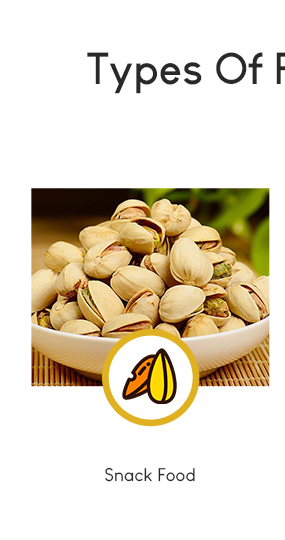 |
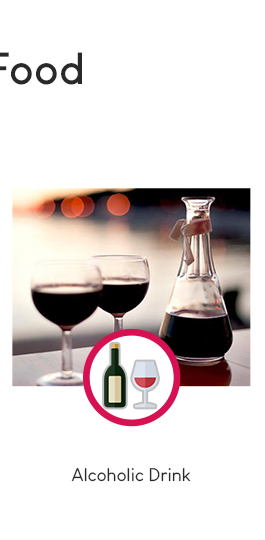 |
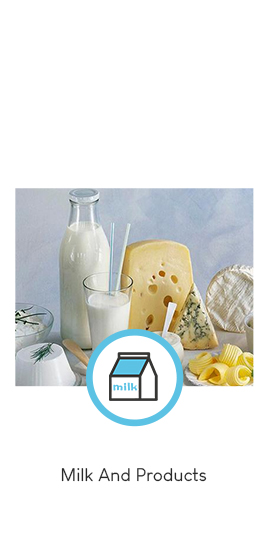 |
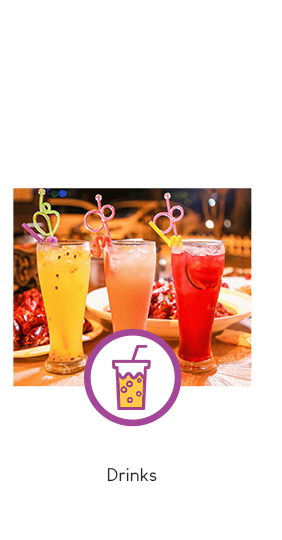 |
||
 |
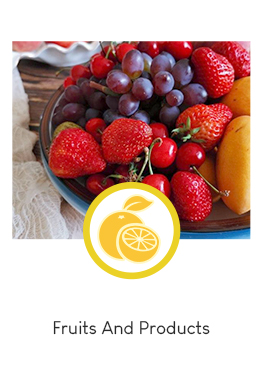 |
 |
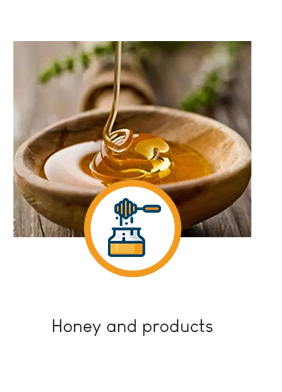 |
||
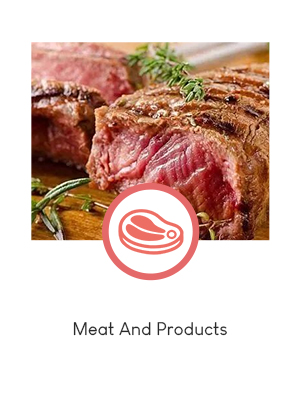 |
 |
 |
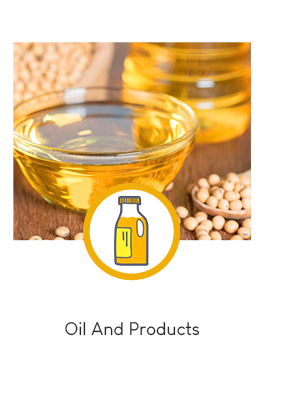 |
||
 |
 |
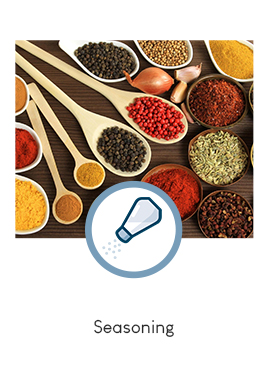 |
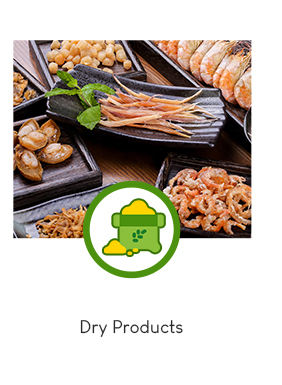 |
||
 |
|||||
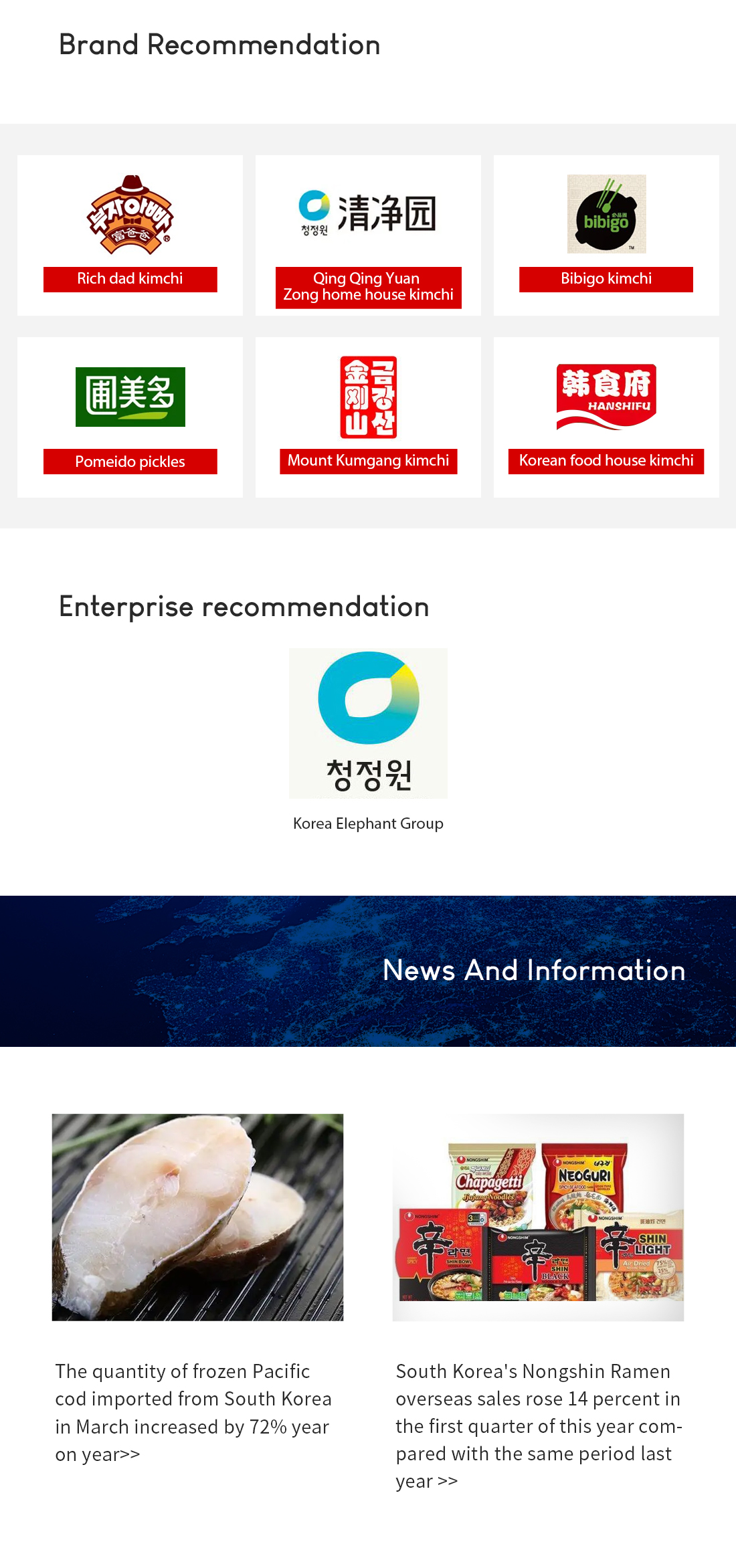
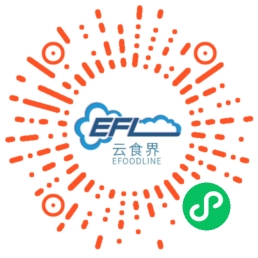 微信小程序
微信小程序


